The challenge of designing drugs with biodegradability in mind
There has been a steady drip of papers published over the past couple of decades documenting the presence of a cocktail of pharmaceuticals and their metabolites in our waterways. In 2016, for example, the US Geological Survey reported that human-use pharmaceuticals were ubiquitous in the 59 streams it had sampled in the eastern US.1 The team looked for 108 pharmaceuticals, and degradates, finding at least one of these at every site. Mixed contamination was the norm: the median number of drugs found in a sample was six and the maximum was 45.

Most of the drugs found in our streams and rivers have been excreted by consumers (some are discharges from manufacturing sites). A 2014 report from the German Environment Agency noted that conventional sewage treatment does not fully remove pharmaceuticals, with efficiencies ranging from 20% to more than 80% for some pharmaceuticals.
It has been known for some time that drug residues, such as those from birth control pills and antidepressants, can impact animals in the environment. Even at concentrations far below therapeutic levels, long-term exposure to drugs have been shown to have ill effects on aquatic species such as damaging reproductive systems and suppressing territorial aggression. These ecological impacts also have potential implications for human health such as the risk that antibiotics present in wastewater can encourage antibiotic resistant bacteria to flourish.
There is also a growing concern that these micropollutants could be finding a way into our bodies – and what the health effects of these might be. The use of wastewater to irrigate crops is one potential issue; a practice gaining popularity as a way to preserve drinking water supplies. A 2016 Israeli study showed that the anticonvulsant carbamazepine was present in such water, then in vegetables irrigated with it and finally in consumers who bought these vegetables.2
Drinking water is another potential route into humans; there have been few comprehensive, systematic studies of the occurrence of pharmaceuticals in drinking water. Although water is treated again before it reaches our taps – and the WHO reassuringly noted, in a 2011 report, that the minimum therapeutic doses of the drugs that have been measured were significantly higher than the levels found in tap water – there is still concern about what long-term exposure to a mix of drug residues for subsets of the population might mean. The consensus is that it is better to be safe than sorry, and that drug residues in both wastewater and fresh water should be cut wherever possible.
One route to this goal is to add extra steps to sewage treatment, to scrub water cleaner before it enters waterways. This is a path Switzerland has heading down, with wastewater treatment plants now required to implement steps to remove 80% of micropollutants including pharma residues and personal care products.
Some argue that better wastewater treatment is the wrong focus. ‘No advanced water treatment can remove all compounds,’ explains Klaus Kümmerer, environmental chemist at the Leuphana University in Lüneburg, Germany. He is also concerned about the potential for one of the main micropollutant-removal processes – the use of oxidising agents, such as ozone or ultraviolet light – to accidently make matters worse. Kümmerer warns that their use generates an array of molecules that we know even less about; these could possess new, unexpected toxic properties. It is also clear that much of the world cannot afford billion-pound water treatment plants, when so many countries lack basic water treatment.
No advanced water treatment can remove all compounds
Klaus Kümmerer, Leuphana University, Germany

Intentional instability
Instead, Kümmerer is arguing for a new approach: drugs that biodegrade in the environment. The idea of intentionally designing drug molecules to fall apart is counterintuitive: stable compounds are normally assumed to be best.
Making compounds stable under all circumstances is the wrong goal, Kümmerer says. He is not alone in this view. ‘We have regulatory requirements for stability and unfortunately that is a problem once a drug gets into the environment. Regulatory agencies are working against the problem, though not intentionally,’ says John Warner, co-founder of the Warner Babcock Institute for Green Chemistry in Wilmington, US.
Both Kümmerer and Warner are pursuing research strategies that they believe could help usher in an era of biodegradable drugs. Through this work, Kümmerer has explored the biodegradability of more than 100 drugs already on the market. Over 15% of the drugs we have tested can biodegrade, he says. None of these, however, were specifically designed to do so: it was a happy accident.
Kümmerer has also identified a number of historic cases of drug molecules being tweaked with an aim of improving efficiency or reducing side effects, but inadvertently also improving biodegradability. In 2000, for example, he reported that efforts by the German Anticancer Research Centre in Heidelberg to restructure the anticancer drug ifosfamide, to increase its absorption in the gut and reduce side effects, had inadvertently also made it biodegradable.3
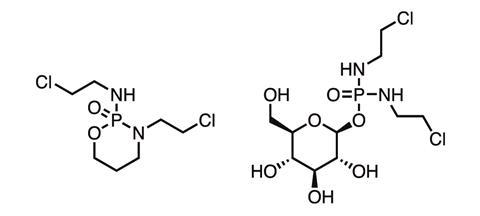
In 2015, Kümmerer and his co-workers set out their strategy for intentionally designing biodegradable drugs.4 And a proof of concept study, published by the same team, saw beta-blocker propranolol redesigned using a non-selective photolysis approach.5 The molecule was first blasted with high-energy hydroxyl radicals generated by UV light, giving rise to a motley crew of derivatives. They then identified which of these were both environmentally biodegradable and still possessed the parts considered essential for the drug to block its target receptor. Contestants were further narrowed down by testing their toxicology credentials. All suitable candidates were hydroxylated derivatives of propranolol, consistent with the idea that attaching electron-donating parts such as hydroxyl groups to an aromatic ring generally increases that molecule’s biodegradability. An assay confirmed the pharmaceutical efficacy of the successful candidate. Kümmerer’s team have also redesigned two other beta-blockers: atenolol and metoprolol.
Kümmerer describes this approach of building biodegradability into lead compounds early on in the drug discovery process as ‘benign by design’. But says it has been a hard sell to the pharmaceutical industry. At a conference in London, UK, in 2006, he describes the industry’s attitude towards him as: ‘hey, he’s a crazy guy’. It is hard enough developing a new drug, without wanting instability too.
And what he was requesting they do isn’t exactly easy to achieve. What makes for a more biodegradable active pharmaceutical ingredient is not always obvious, but there are some rules of thumb, Kümmerer explains. ‘For example, one should avoid highly branched carbon chains. Linear carbon chains are common in nature and bacteria break them down.’
Attempts by his research group to collect concrete evidence proving to the industry that benign by design is possible have met with some success. Kümmerer says that he plans to patent a new active compound for a ciprofloxacin-class antibiotic. ‘We designed it on the computer and then synthesised it, showing that the molecule is both active and biodegradable,’ says Kümmerer. The need to address the problem of antibiotics in the environment has gained extra impetus from concerns over resistance with outflows from sewage treatment plants and manufacturing facilities for active pharmaceutical ingredients (APIs) being known hotspots for antibiotic resistant bacteria. Around 80% of API production is in India or China where the standard of water treatment is far too low, notes Max Hempel, environmental chemist at the German Federal Environmental Foundation. Hempel praises Kümmerer’s work on developing what would be a more environmentally benign alternative to the antibiotic ciprofloxacin. However he has no illusions that this work heralds that start of a green drug revolution. ‘There is currently no benefit to industry in developing an environmentally benign drug,’ says Hempel. ‘We need some incentives.’
There is no benefit to industry in developing benign drugs. We need some incentives.
Max Hempel, German Federal Environmental Foundation
A temporary relationship
Warner, meanwhile, has developed an alternative strategy to biodegradable drugs. Right now, he says, chemists are generally trying to make Frankenstein-like molecules. ‘Part of the molecule has solubility, part controls pharmaceutical activity and part controls dissolution. We put the pieces together to create the perfect molecule,’ Warner explains. But there is an alternative approach: the use of non-covalent derivatives.
Instead of making one perfect molecule, you take your active ingredient and pair it with a second molecule that gives you the extra property you desire. This idea has already been proven to be capable of improving solubility and water stability of some drugs, with no loss of pharmaceutical activity.6
Warner wants the pharmaceutical industry to use this coalition compound approach to develop drugs that are stable in the body, but fall apart – into environmentally benign components – when excreted. ‘You discover a useful drug candidate, but it decomposes easily, so no one wants it. But if you use non-covalent derivatisation to temporarily stabilise it in pill form, then it has shelf life. Then it goes back into its unstable state once it gets out into the environment,’ he says. ‘That is my vision: you can have your cake and eat it.’
This idea is already gaining traction in the area of agricultural chemicals. Bayer has a patent to use non-covalent derivatisation to reduce the water solubility of fungicides – cutting the amount needed and preventing excessive run-off into waterways. ‘You need chemicals to protect crops, but if it gets into the waterways and into drinking water, people get grumpy,’ says Warner. ‘The first place non-covalent derivatives are going to appear is in the agricultural industry. It has more of an incentive.’ Once breakdown in the environment using a non-covalent derivative is demonstrated in agriculture, he is confident the concept can be transplanted into pharmaceuticals.
There is little push right now for pharma to develop degradable drugs, Warner acknowledges. He also realises that having a single molecule drug designed to be unstable may be scary for consumers or regulators. But, he argues, these coalition compounds – bound by hydrogen bonds, ionic forces, Van der Waals forces and pi-pi interactions – with triggered degradation in the environment, could offer reassurance.
We should stop measuring what residues are in the water and start doing something [about it]
Klaus Kümmerer, Leuphana University, Germany
The push
But how to encourage the pharmaceutical industry to develop biodegradable drugs remains a challenge. One idea, says Kümmerer, is to prolong patent time for drugs of this type. ‘Most money is made at the end of a patent lifetime, so we could agree upon elongation of a patent or fast track authorisation, this would be a huge incentive for industry.’ In Sweden, doctors are able to choose drugs according to how environmental friendly they are. Kümmerer says that wider adoption of this practice could also provide the financial incentive needed to nudge companies in the right direction.
He also supports wielding a heavy stick. Right now, veterinary products must be assessed for their environmental impact and poor results can result in authorisation being blocked. Kümmerer says that regulators should also consider blocking human medicines on environmental grounds. Others disagree with the big stick approach. ‘I couldn’t imagine a rule where we restrict human pharmaceuticals [for environmental reasons],’ says Hempel. Warner too believes it too heavy a punishment: ‘Right now we can’t create a regulation that shuts down the pharmaceutical industry. We just don’t have enough of these compounds [with triggered biodegradability].’ He says chemists need to make the technologies first and then regulations could be considered.
This isn’t to say that the environmental impact of human medicines is currently being completely ignored: they are not. Both the EU and US require an environmental risk assessment before market authorisation. But this process is designed to ensure any possible mitigating measures are implemented, rather than to consider the idea of blocking access to new drugs.
Both Warner and Kümmerer have noted more acceptances of their ideas recently, partly due to increased awareness of the issues they are trying to tackle. ‘Pollution of water with drugs is now a worldwide issue,’ says Kümmerer. ‘I have more requests to go to big pharma companies and introduce the concept [of benign by design],’ he says. Warner, meanwhile, says that he is optimistic that his collaborative compounds can light the way to biodegradable drugs that work in patients.
And both are eager for to see more people working on developing biodegradable drugs. The scale of the micropollutant problem is now starting to be widely accepted but there are still not enough people working on solutions, says Warner. Kümmerer agrees: ‘We should stop measuring what residues are in the water and start doing something [about it].’
References
1 P M Bradley et al,Environ. Sci. Technol. Lett., 2016, 3, 243 (DOI: 10.1021/acs.estlett.6b00170)
2 O Paltiel et al,Environ. Sci. Technol., 2016, 50, 4476 (DOI: 10.1021/acs.est.5b06256)
3 K Kümmerer et al,Chemosphere, 2000, 40, 767 (DOI: 10.1016/S0045-6535(99)00451-8)
4 C Leder, T Rastogi and K Kümmerer,Sustainable Chem. Pharm., 2015, 2, 31 (DOI: 10.1016/j.scp.2015.07.001)
5 T Rastogi, C Leder, and K Kümmerer,Environ. Sci. Technol., 2015, 49, 11756 (DOI: 10.1021/acs.est.5b03051)
6 E Soler and J C Warner,Molecules, 2015, 20, 14833 (DOI: 10.3390/molecules200814833)





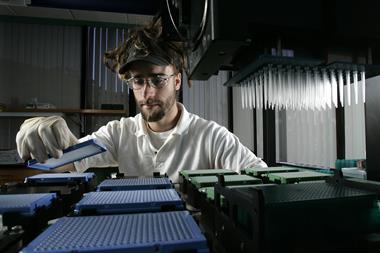
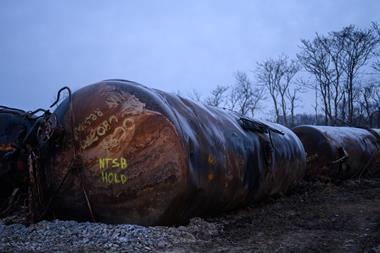
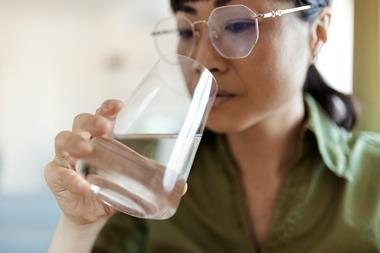

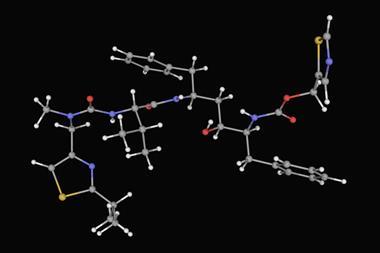


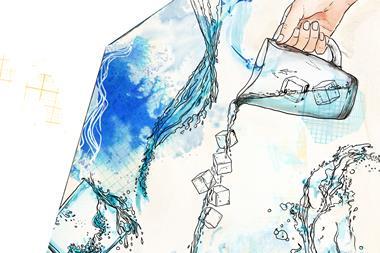
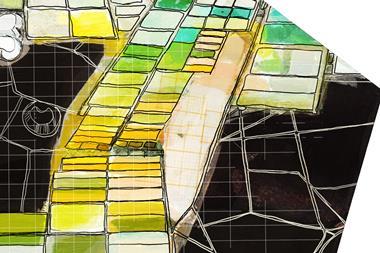
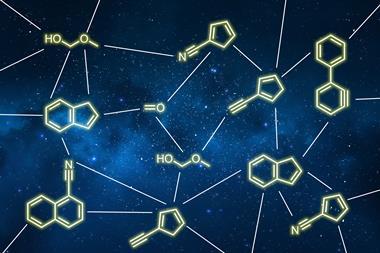
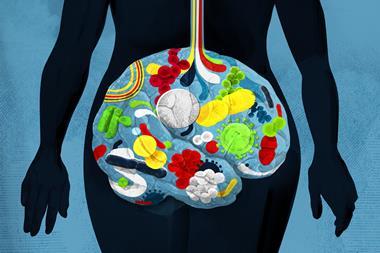
No comments yet